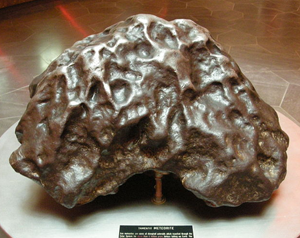Keeping it clean, it’s difficult. And that’s not even counting our language. But if we had a list of public welding enemies, dirt would be right at the top next to welding naked (sounds fun, it’s not). Nothing ruins what would otherwise be a perfect weld faster than dirt on your workpiece. There’s very few, if any tips, tricks or tools that can replace properly prepping your workpiece before starting a weld. Here’s 4 pro tips you should probably be doing before you even think about striking an arc.
Metal on Metal
Yessir, Metal on Metal. It’s not a robot porno from the 90s. Well, maybe it is. But it’s also one of the best things you can use to evaluate your workpiece before you start. You should always ask yourself, “Will there be any other substances between the metal of my workpiece and the metal of my bead?”
This might seem like an obvious tip, but we’re not just talking about imperfections you can see (rust, dirt, etc.). Many of the metal pieces we use today have a coating to protect them from oxidization during storage and shipment. If you try to weld through the coating before cleaning it, it can cause all sorts of imperfections with your bead. Depending on the coating, these complications could be relatively minor or could cause huge problems in your weld. Often the coating can be easily removed with sandpaper, a wire brush, an angle grinder or abrasive blasting (for the really tough stuff). Just be careful with blasting any sensitive metals such as aluminum as it can lodge contaminants even further into the material.
Protect Yourself
Galvanized fumes aren’t big foot, aliens or Elvis. They’re not a conspiracy theory. They’re 100% a real thing and are 100% not good for your body. If you’re cleaning the coating off galvanized metals, you’ll want to protect yourself. This means 2 things: First you need some kind of ventilation to prevent the fumes from going up into your face. This could be a hood with its own ventilation system or a properly placed fume extractor placed right above your workpiece.
The 2nd thing you’ll want to do is make sure the fumes aren’t still hanging around your workshop. This means opening up windows or turning on your swamp boat’s fan. If your swamp boat is out of gas, you can also try grinding off your galvanized steel outdoors. If you just don’t have good ventilation in your workshop, you might really want to consider a fume extractor to move those harmful chemicals outside .
No Dust Left Behind
So many welders finish grinding off the impurities from their metal and get to work immediately laying beads. And we get it. Prepping for a weld isn’t that fun. But all those impurities and dust don’t just disintegrate after becoming dislodged from your workpiece. To get rid of them fully, you’ll want to go over your workpiece with a cloth and some cleaning solvent after you’re done grinding. What type of solvent you use will depend on your welding process and material. However, we would recommend staying away from any solvent that leaves an oily residue.

Strange Shapes
Cleaning flat workpieces doesn’t take too much creativity. It’s the strange and unusual shapes that become real head scratchers when trying to figure out how to properly prep. For instance, how would you prep the mantis sculpture to the left? The plates wouldn’t be too difficult, but what if you wanted to weld underneath the mantis’ jaw? Most grinders couldn’t fit in such a tight place. For these types of situations, you’ll want to use a wire brush . Handheld Wire brushes are just as good as sandpaper at getting into those hard to reach places. However, wire brushes are much better for getting rid of thick impurities than sandpaper. Just make sure the type of brush you’re using won’t weaken your material. For instance, steel brushes can actually damage softer materials.
Any expert will tell you that properly prepping for a weld can be just as important as the weld itself. Following these 4 tips will really help improve your welding performance, especially if you haven’t been appropriately cleaning your workpieces. Let us know what tips and tricks you use to prep for your welds in the comments below. If you’re interested in more welding pro tips, check out the blog posts below:






